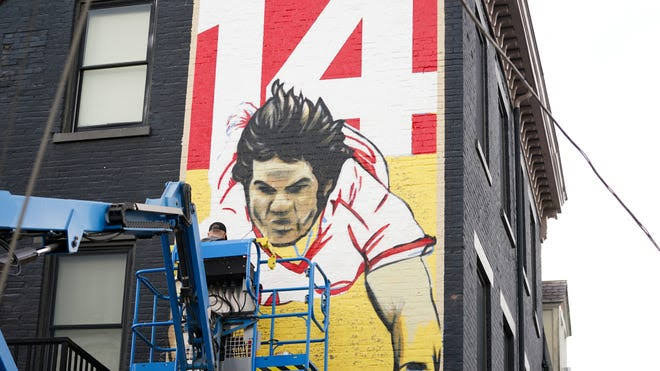
A new mural honoring baseball legend Pete Rose has been unveiled in downtown Cincinnati, sparking a debate about whether the controversial figure deserves such recognition. For fans of Cincinnati Reds and baseball purists, Rose’s achievements as one of the greatest players in Major League Baseball history are undeniable. However, his troubled past has led some to question whether this public display of honor is appropriate.
Pete Rose’s Baseball Legacy
Pete Rose, also known as “Charlie Hustle,” is Cincinnati’s baseball icon. Over the course of his 24-year career, Rose amassed 4,256 hits—an all-time record that still stands. His grit, determination, and love for the game embodied the spirit of baseball, and he remains a hero for many fans in Cincinnati. The mural, located prominently in the heart of the city, is seen by some as a tribute to his legendary career and a reminder of his relentless dedication to the sport.
The Controversy: Gambling and Scandals
However, Rose’s legacy is far from straightforward. In 1989, Rose was banned from baseball for life after it was revealed that he had bet on games while playing and managing for the Reds—a violation of MLB’s most sacred rule. His gambling scandal has overshadowed his career for decades and has kept him out of the Baseball Hall of Fame, a topic that continues to divide baseball enthusiasts and experts alike. Critics of the mural argue that celebrating Rose in this way overlooks his fall from grace and sends the wrong message about accountability in sports.
Redemption or Excuse?
The mural honoring Pete Rose raises difficult questions about redemption and second chances. Should we celebrate Rose for his athletic achievements despite his moral failings? Some argue that his betting scandal does not erase the fact that he was one of the greatest hitters the game has ever seen. Others believe that honoring him sends a message that talent and success can excuse unethical behavior.
Rose has repeatedly expressed remorse for his actions and has even lobbied to be reinstated into baseball so that he might one day enter the Hall of Fame. Supporters of the mural see it as a way of recognizing his accomplishments on the field, separate from his off-field indiscretions. On the other hand, detractors feel that public honors like this should be reserved for those whose character reflects the highest standards, not just their athletic prowess.
A Divisive Symbol in Cincinnati
For the city of Cincinnati, the mural is more than just a tribute to a local sports legend—it’s a reflection of how a community grapples with the complexity of its heroes. Many locals see Pete Rose as an integral part of the city’s identity, a working-class hero who fought his way to the top. But for others, this mural is a symbol of how society often turns a blind eye to the flaws of its icons.
Conclusion
The Pete Rose mural downtown Cincinnati continues to ignite conversation about the line between honor and controversy. Is this mural a well-deserved recognition of one of baseball’s greatest players, or does it glorify a figure whose actions violated the integrity of the game? The debate underscores a broader societal question: how should we remember figures who are both extraordinary and flawed? For now, the mural stands as a testament to Rose’s baseball legacy, but the controversy surrounding it is unlikely to fade anytime soon.






